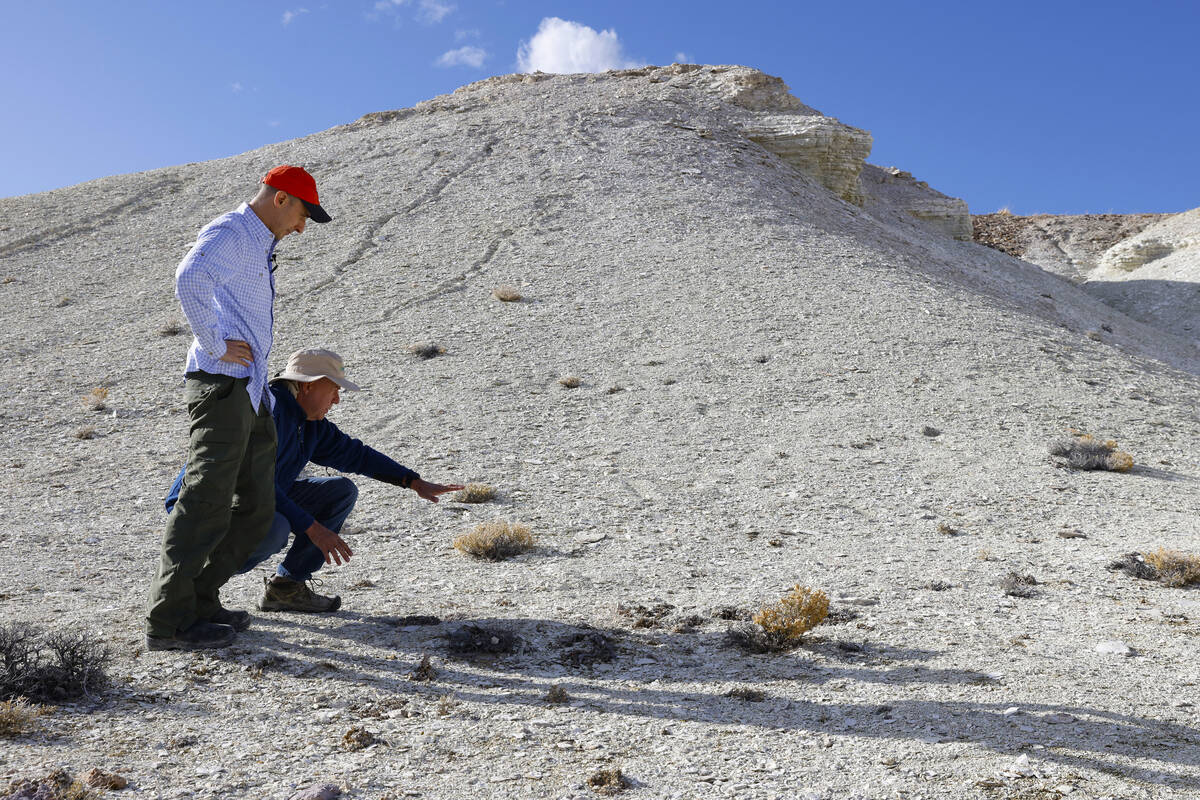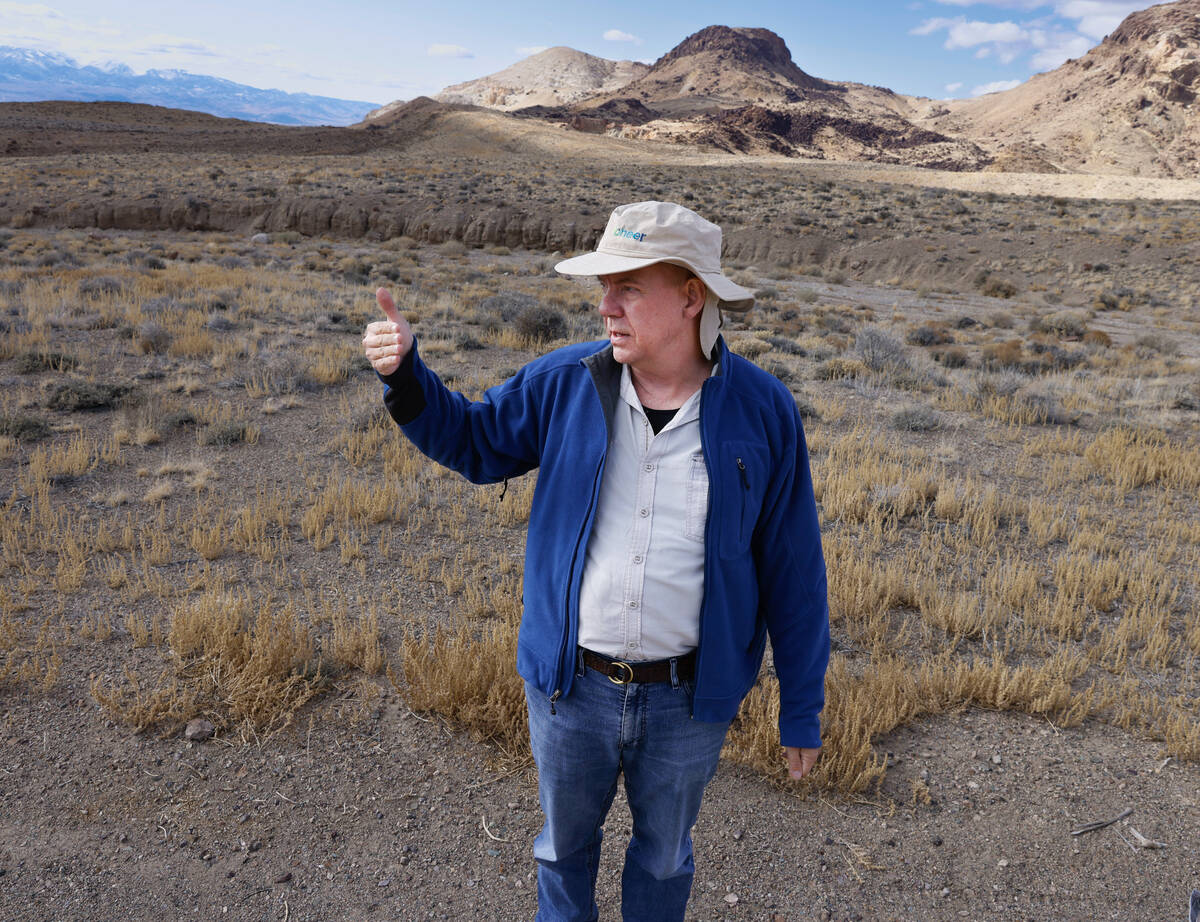Long-awaited plan on environmental effects of proposed lithium mine released
The Bureau of Land Management released a long-awaited plan detailing the environmental effects of a proposed lithium mine in central Nevada on Tuesday, allowing the public the chance to comment on it before the process proceeds in 45 days.
An agency spokesman had initially said the plan would be released this Friday after a news release misstated that it was available for review last Friday.
Some environmentalists have said the plan would lead to the extinction of Tiehm’s buckwheat, a federally protected wildflower that only grows in this particular region of Nevada.
The 230-page main document and over a dozen supplemental documents are now accessible and provide clarity on plans to preserve the wildflower, as well as information on how the mine would affect water, air quality and more.
The project, proposed in rural Esmeralda County by Australian mining company Ioneer, is one of more than 80 proposed lithium mining projects across Nevada that environmentalists are keeping tabs on. Lithium is an important mineral to the transition away from fossil fuels, powering electric vehicles.
“We’ve had many, many meetings over the years, listening to concerns and trying to make sure we modify and adapt the project to take those into account,” said Bernard Rowe, managing director of Ioneer, which has spent more than $172 million in the exploration phase of the project.
Three paths forward
The document breaks down impacts by three categories: proposed action, north and south OSF — or ore storage facility — alternative and a no-action alternative.
“Proposed action” refers to Ioneer’s initial plan, while the “north and south OSF alternative” is a reconfigured one the company wants to move forward with, meant to minimize harm to Tiehm’s buckwheat. A “no-action alternative” is where the BLM would reject the project and work on reclaiming the 15 acres of land that have been disturbed in the company’s exploration.
The reimagined plan reduces the wildflower’s disturbed habitat from 38 percent to 22 percent, according to the document, with a 300-foot buffer when possible, with some exceptions. Still, once the project progresses, much of the wildflower’s already limited population would be surrounded by an open pit lake and be subject to sulfuric acid in the air.
The assessment also says groundwater pumping could affect water available to surrounding low-income residents, though Ioneer has said there would be no impact to domestic wells.
In a statement, Center for Biological Diversity spokesman Patrick Donnelly and California Botanic Garden botanist Naomi Fraga condemned the plan. After the process, a lawsuit could follow to determine whether the habitat would be “adversely modified,” Donnelly said.
“No amount of destruction of its critical habitat is acceptable,” Fraga wrote. “The botanical community will stand together to fight back.”
What will really test the wildflower’s Endangered Species Act protections, Donnelly said, is the U.S. Fish and Wildlife Service’s decision about whether the buckwheat would be affected, which will come later in the federal permitting process.
Anyone interested in giving feedback on the document may submit written comments on the BLM’s page for the project. Agency representatives will hold community meetings, too, to solicit feedback. In May, in-person meetings will take place in both Dyer and Tonopah with a third one on Zoom.
Contact Alan Halaly at ahalaly@reviewjournal.com. Follow @AlanHalaly on X.


















